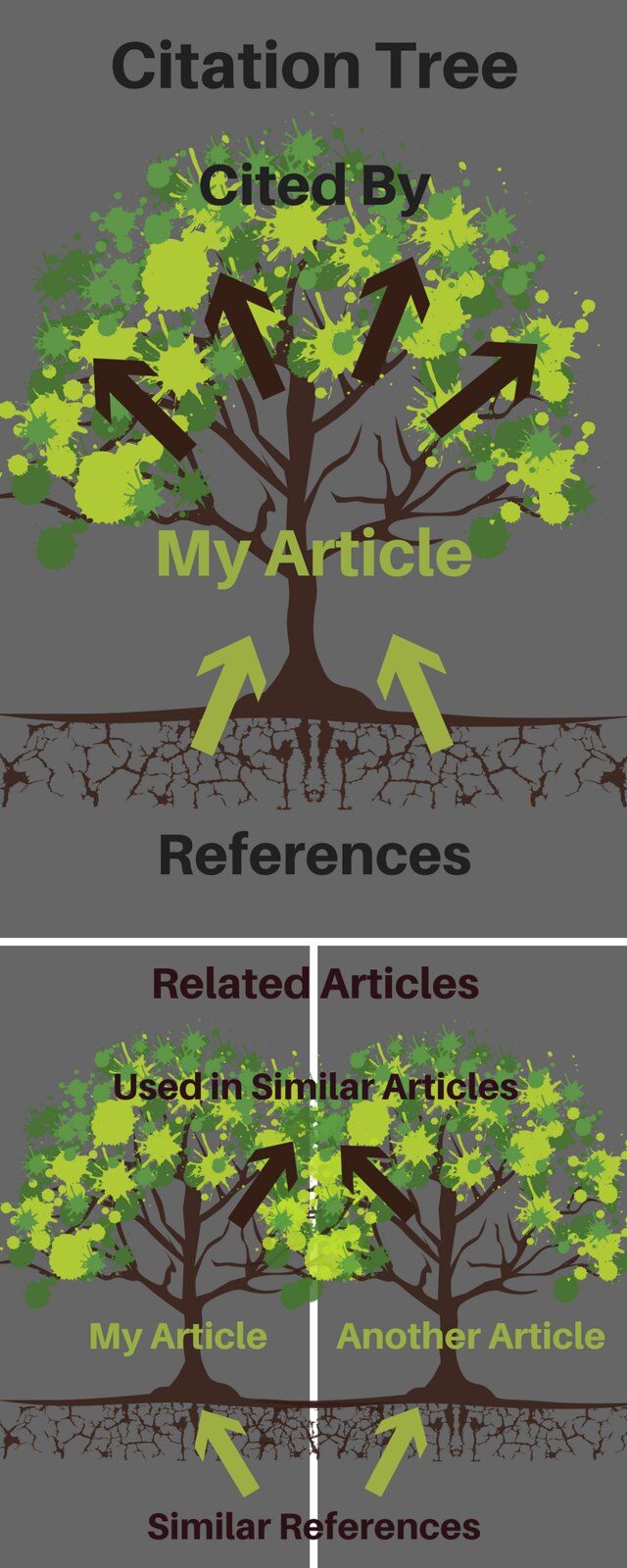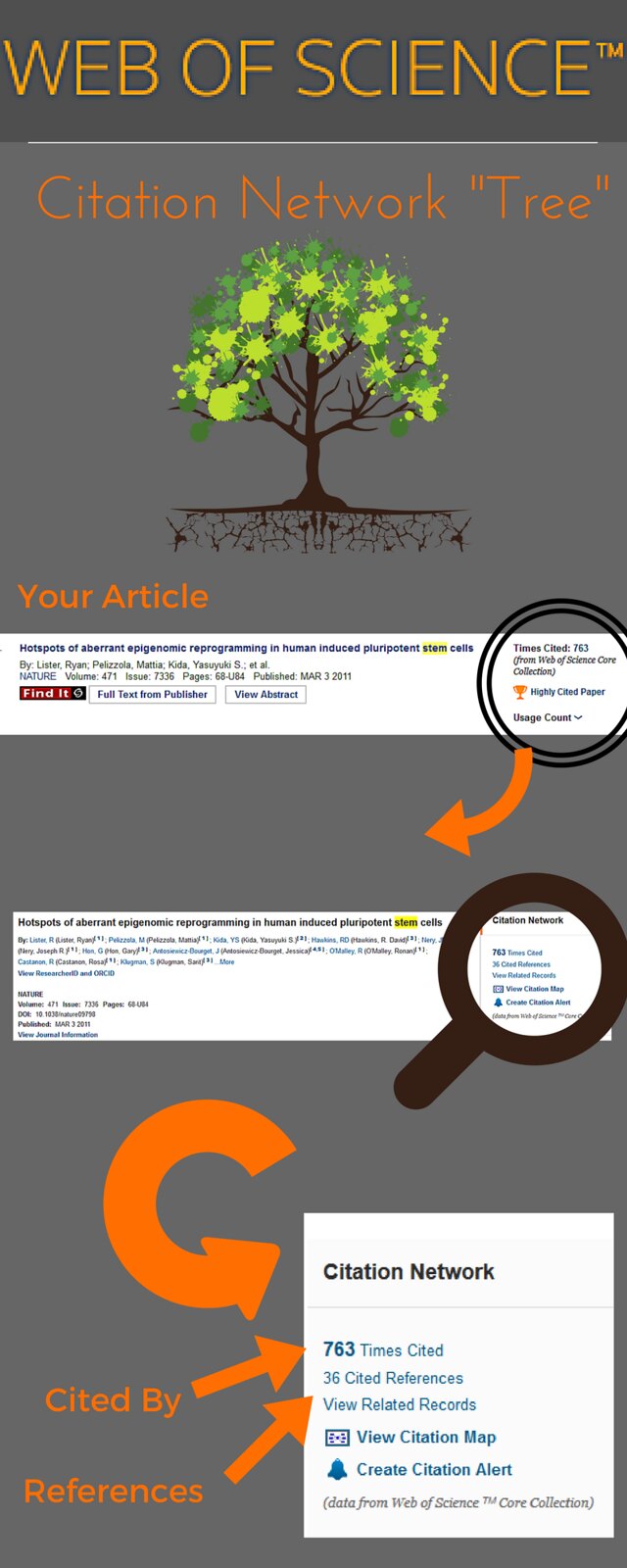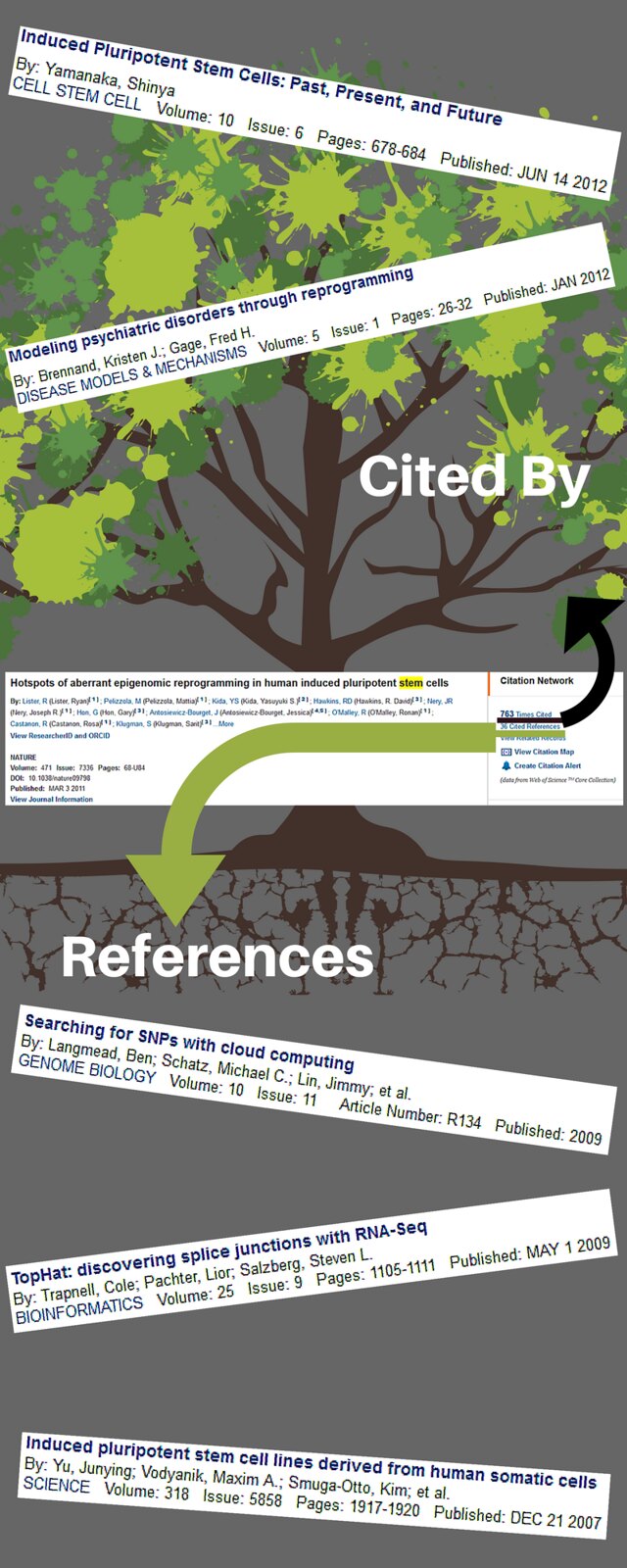BIOCORE (Biology Core Curriculum) 181: Becoming a Scientist: Doing Biology Research (Fall 2024) : Exploring Citation Networks
Introduction to Citation Networks
The Citation Tree represents relationships among research articles.
The trunk of the tree represents one research article that you may have found while searching.
The roots represent the reference list of that initial research article. This is the knowledge that fed the initial research article and is a snapshot of what was understood of a subject at a certain point in the past.
The branches represent the spread of knowledge from the one research article to other lines of inquiry. It shows the expansion of understanding about a subject and where future research might be directed.
The roots and branches originate from and move in many different directions. A research article may be supported by seemingly unrelated articles from multiple disciplines that address specific aspects of the research article. A research article may find its information supporting research from disciplines outside its own--or disciplines that didn't exist at the time it was written.
Locating Citation Networks in Web of Science
In Web of Science, an article's Times Cited number refers to the number of later research articles that have used your initial article as a source of information. Opening this link will show you what these later articles are, and what new knowledge has been built using your initial research article. Some articles get cited many times. Some never get cited, or are cited only a few times.
In Web of Science, an article's Cited References number refers to the number of research articles appearing in its own reference list. Opening this link will show you the earlier articles that informed the research of your initial article.
Other databases, such as Scopus, Pubmed, or GoogleScholar, may show you this information for articles in their database, but will use different terms such as "Cited By" or simply "References". Examine the timeline of the articles presented. If their dates of publication are earlier than your initial article, they likely represent your initial article's own reference list. If their dates of publication are later than your initial article, they are likely the articles that used your initial article as a source of information
Relationship of Articles within Citation Networks
Research articles draw their support from a variety of disciplines and specialties. The information in one research article may also be disseminated to disciplines beyond the one it was originally targeting.
The relationships between a research article and the articles that later cite it, or the articles in its own reference list, aren't always apparent from titles or keywords.
When you are exploring relationships among research articles and their references or later citing articles, be certain to read the full text of those papers to grasp the nuances of how the information has been used.


